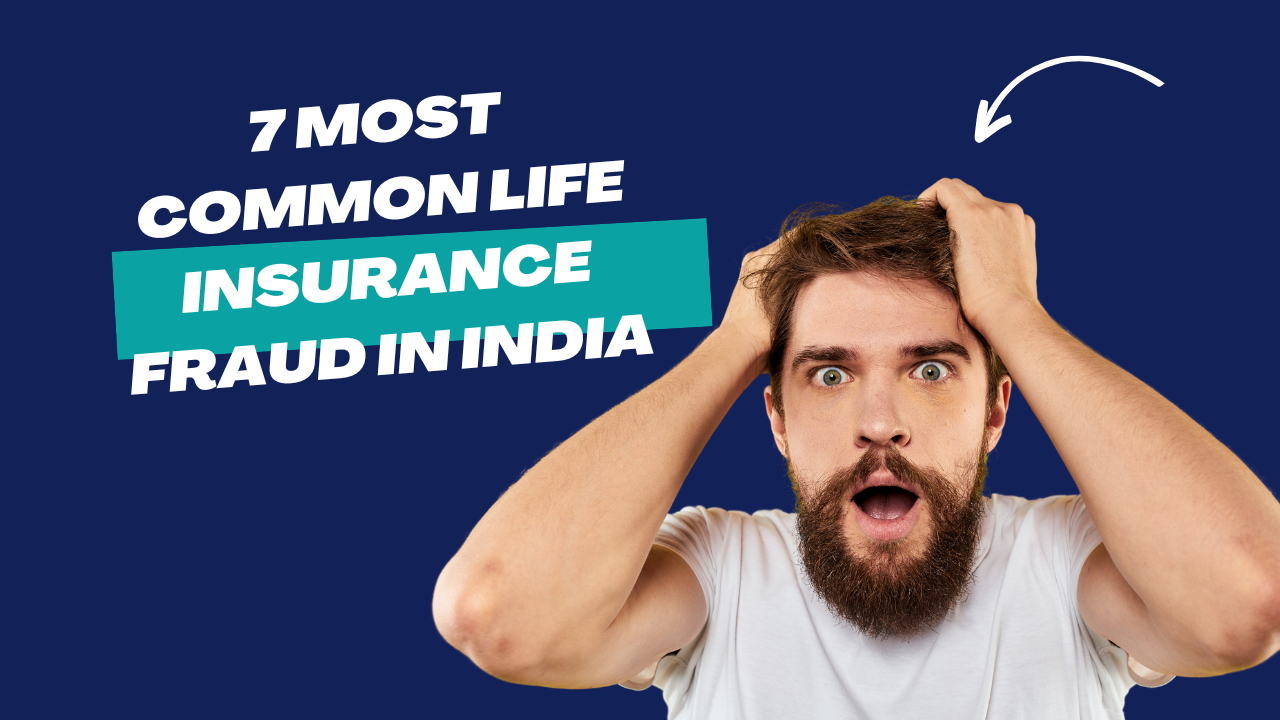Life insurance fraud is a one of the major issues in India, affecting both insurers and policyholders. These fraudulent activities not only lead to substantial financial losses but also undermine the trust in the insurance sector. Understanding the most common types of life insurance fraud is crucial for both consumers and industry professionals. From submitting false claims to manipulating policy terms, fraudsters employ various tactics to exploit the system. In this article, we will explore the seven most common life insurance frauds in India, shedding light on how they occur and how you can protect yourself from falling victim to these schemes.

Here are the common Life Insurance Fraud in India:
1. False Claims and Death Certificates
False claims involving fake death certificates are a prevalent type of life insurance fraud. In these schemes, fraudsters forge or manipulate death certificates to falsely claim insurance benefits. The perpetrators may employ various tactics, including bribing officials or creating sophisticated counterfeit documents, to deceive insurers into believing that a policyholder has passed away. This deceitful practice exploits the insurer’s reliance on official documentation and often involves a network of accomplices, from document forgers to corrupt officials. The impact of such fraud is significant, leading to substantial financial losses for insurance companies and increasing premiums for honest policyholders. To combat this type of fraud, insurers are increasingly adopting advanced verification techniques and employing fraud detection tools to ensure the authenticity of death certificates and other critical documents.
2. Policyholder Impersonation
Policyholder impersonation is a deceptive practice where individuals pose as the actual policyholder to make unauthorized changes to the insurance policy or withdraw funds. This form of fraud often involves family members, acquaintances, or even strangers who gain access to personal information and credentials of the genuine policyholder. By pretending to be the policyholder, these fraudsters can alter policy details, such as beneficiary designations, or access funds unlawfully. The motive behind such fraud can vary from financial gain to personal disputes. To counteract this, insurance companies are increasingly implementing stringent identity verification procedures, including biometric checks and multi-factor authentication, to ensure that only authorized individuals can make changes to policies or access funds. Additionally, policyholders are advised to regularly review their policy details and keep their personal information secure to prevent such fraudulent activities.
3. Agent-Driven Fraud
Agent-driven fraud occurs when unethical insurance agents exploit their position to deceive customers. These agents may mislead clients by selling inappropriate or inadequate policies, often presenting falsified information about the policy’s benefits to secure sales. In some cases, agents might assure clients of unrealistic coverage or hidden benefits that do not exist. Additionally, these fraudsters may engage in financial misconduct by pocketing premium payments instead of forwarding them to the insurance company. This not only defrauds the customer but also jeopardizes their coverage. The repercussions are severe, leading to financial losses for both the policyholder and the insurer. To mitigate agent-driven fraud, insurance companies are increasingly adopting rigorous oversight measures, including regular audits and comprehensive agent training. Customers are also encouraged to verify policy details and agent credentials independently, ensuring they are fully informed before making any commitments.
4. Claim Fraud by Insured
Claim fraud by the insured involves policyholders deliberately providing inaccurate or misleading information either during the application process or when making a claim. This deceitful behavior can take various forms, such as underreporting one’s age, concealing pre-existing health conditions, or exaggerating the extent of losses or damages. By manipulating information, policyholders aim to secure policies they might otherwise be ineligible for or to obtain larger claim payouts. This type of fraud undermines the integrity of the insurance system and leads to increased premiums for honest policyholders. Insurers combat claim fraud through rigorous verification processes, including detailed medical and financial assessments, and by utilizing advanced data analytics to detect inconsistencies. To protect themselves, policyholders should provide accurate information and disclose all relevant details truthfully, ensuring fair processing of their claims and maintaining the reliability of their coverage.
5. Forgery and Alteration of Documents
Forgery and alteration of documents is a common form of insurance fraud where fraudsters manipulate official paperwork to achieve illicit benefits. This can include forging or altering policy documents, medical records, or other crucial paperwork to influence the outcome of claims. For example, fraudsters might change the beneficiary designations on a policy to divert funds to themselves or inflate claims by modifying medical records to exaggerate injuries or losses. Such fraudulent activities undermine the insurance system’s integrity and can lead to significant financial losses for insurers and increased costs for honest policyholders. Insurers combat this type of fraud by employing advanced document verification technologies and cross-referencing with multiple data sources. Regular audits and vigilant monitoring of policy changes also help detect and prevent forgery and alterations. Policyholders are encouraged to review their documents carefully and report any suspicious activities to maintain the system’s reliability.
6. Premium Diversion
Premium diversion is a fraudulent practice where an insurance agent collects premiums from policyholders but fails to remit these payments to the insurer. In such cases, the agent may deceive the policyholder into believing that their premiums are being properly submitted and that their policy remains active. However, because the payments are not forwarded to the insurance company, the policy can lapse due to non-payment. This leaves the policyholder without coverage when they may need it most. Premium diversion can result in significant financial and emotional distress for policyholders, who may be unaware of the lapse until they make a claim and find it denied. To prevent such fraud, insurers are increasingly implementing strict monitoring and reconciliation procedures for premium payments and maintaining robust communication channels with policyholders. Policyholders are advised to regularly check their payment records and policy status to ensure their coverage remains valid.
7. Fake Insurance Companies
Fake insurance companies represent a severe form of fraud where scammers establish fraudulent entities or websites that mimic legitimate insurance firms. These deceptive operations lure unsuspecting customers by offering attractive policies and competitive rates, often through convincing online platforms or high-pressure sales tactics. Victims may purchase these non-existent policies, believing they are securing genuine coverage. However, when they attempt to make a claim or seek assistance, they discover that the company does not exist, leaving them without the promised protection. This type of fraud not only results in financial loss but also undermines trust in the insurance industry. To protect against such scams, consumers should verify the legitimacy of insurance companies by checking regulatory licenses, reading reviews, and ensuring that the company is listed with recognized insurance authorities. It’s crucial to conduct thorough research and consult trusted sources before purchasing any insurance policy.
Conclusion
Understanding common life insurance frauds in India is essential for safeguarding oneself and ensuring the integrity of the insurance system. Fraudulent activities, including false claims, policyholder impersonation, agent-driven fraud, and fake insurance companies, undermine trust and lead to financial losses. By being aware of these deceptive practices, policyholders can take proactive steps to protect themselves, such as verifying documents, scrutinizing policy details, and consulting reputable sources. Insurers also play a crucial role in implementing stringent verification processes and fraud detection measures. Together, informed consumers and vigilant insurers can help mitigate the impact of life insurance fraud and maintain a trustworthy insurance environment.
Read More:
- Bike Insurance: Premium Details And How To Buy
- How safe private insurance companies are?
- 7 principles of Insurance which every investor should know
- Why should you avail life insurance?

Hello, I am Tanisha Kriplani, graduated in computer science from Delhi University. I am passionate about web content writing and have a strong interest in Data Analytics and Data Engineering.












